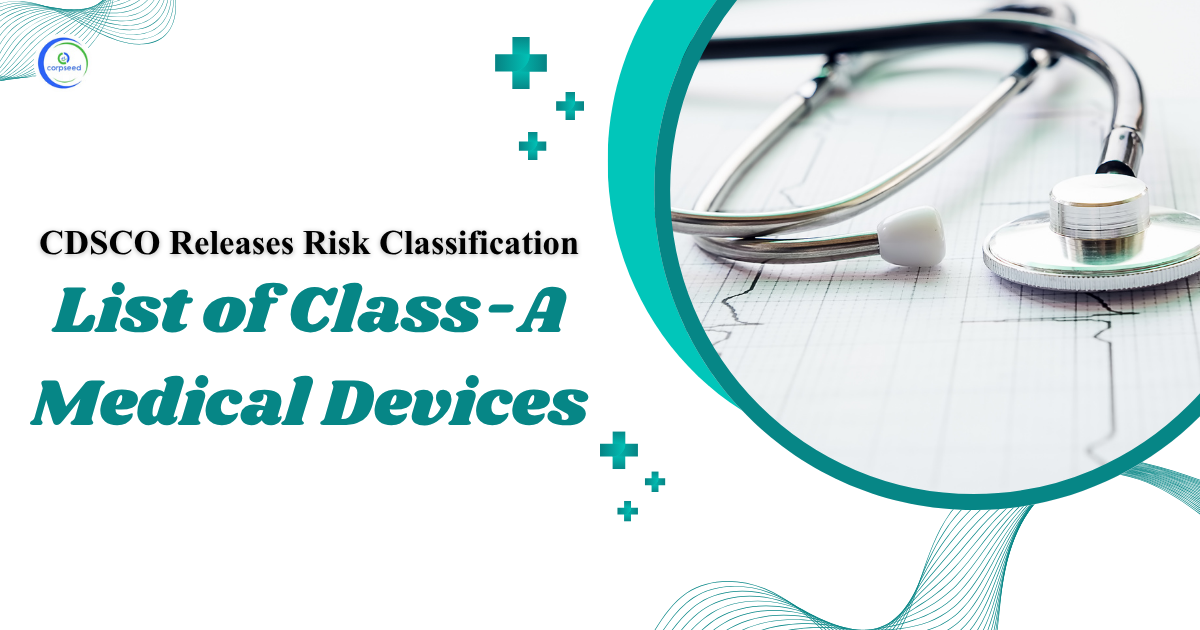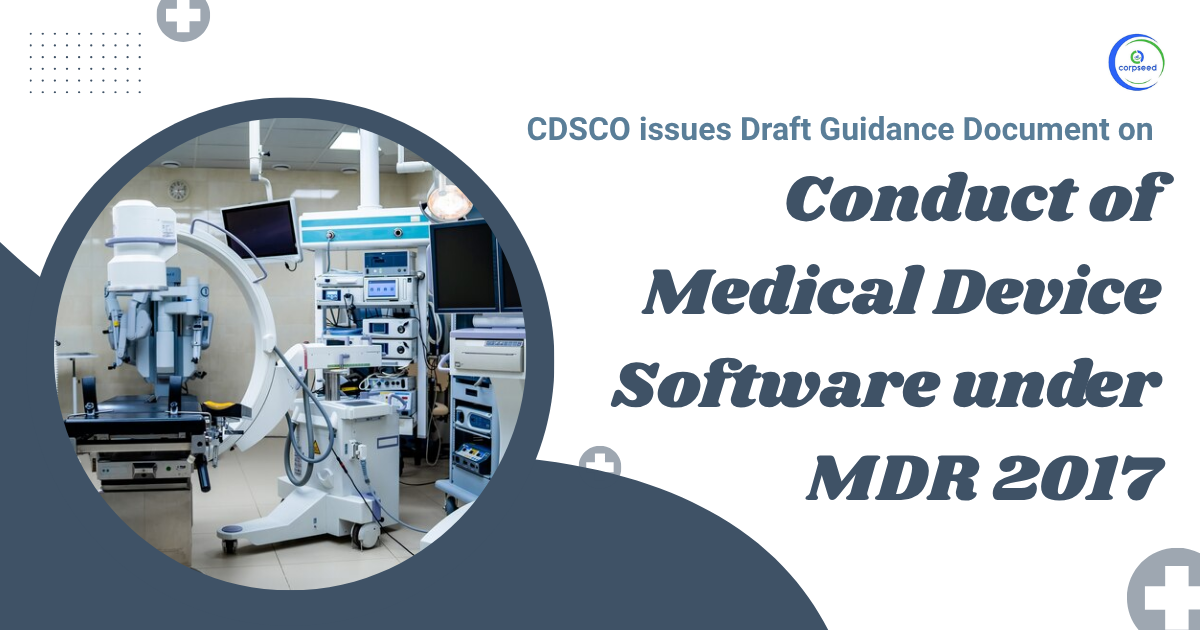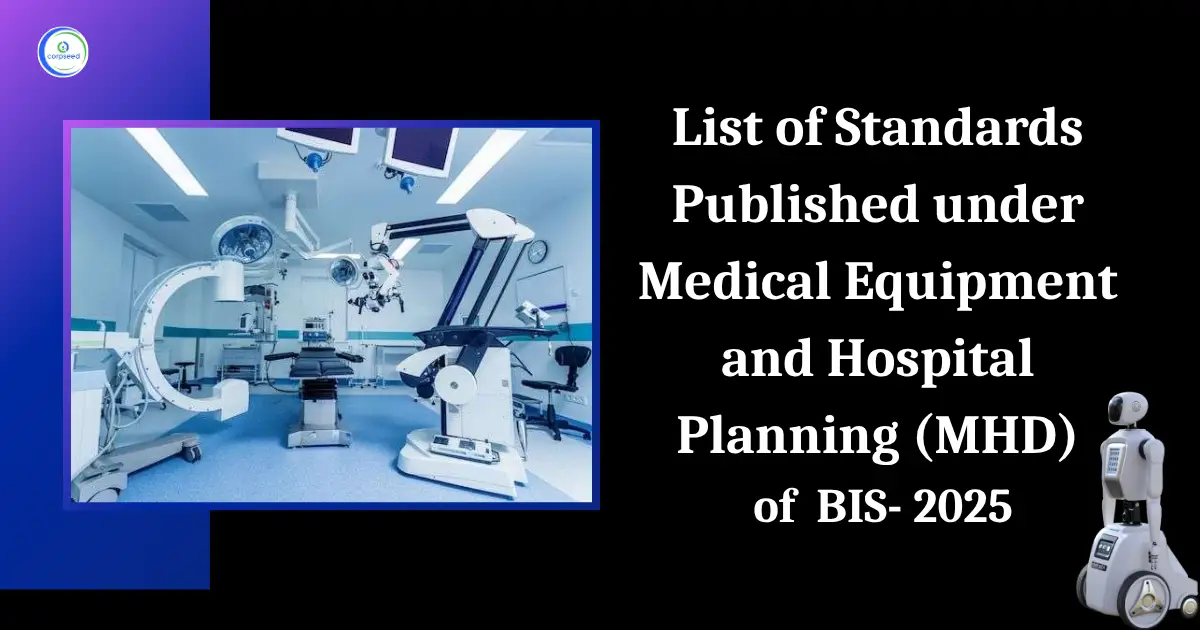A Brief Introduction of Urology
The medical branch of medicine specifically for the medical condition of the male and female urinary tract system is known as Urology. A urologist is a specialist medical professional who specifically treats diseases related to the urine system. Doctors uses urine to check the illness of a patient in ancient times but now this becomes a whole field of medicine that is dedicated to the health of the urinary system including the kidney, bladder, prostate, penis, and testis.
Table of Contents
- A Brief Introduction of Urology
- What is a Medical Device?
- Types of Medical Devices in India
- Eligibility Criteria for Medical Devices Registration/Import
- Process & Fee for Medical Devices Registration
- Documents Required to be Attached
- Time Involved &Validity for Registration
- Re-registration or Renewal of the Registration Certificate
- Post-Compliances after Receiving Registration
- How to Register any new /additional Medical Device if Medical Device Registration Obtained Already?
--------------Blog Contact Form-------------
From 1st of October 2022, the said medical devices having risk class A and B will be covered under the licensing regime of CDSCO. Once the devices are under the scope of licensing regime of CDSCO, all the importers and manufacturers of the said devices will have to apply for the license in order to sell their products in Indian Market.
The urology category consists of total of 78 medical devices which are classified on the basis of their risk class and intended use. Out of which only class A and class B medical devices will fall under the licensing regime from 1 October 2022. The CDSCO listed medical devices are as below mentioned
| UROLOGY | |||
| S. No. | Device Name | Intended Use | Current CDSCO Classification |
| 1 | Biliary/urinary stone retrieval basket, reusable | A flexible manual instrument designed to remove biliary and/or urinary stones (gallbladder and/or renal calculi) from the body during an endoscopic procedure. | B |
| 2 | Bladder neck spreader | A manual gastroenterology-urology surgical instrument with specially designed moveable blades intended to be used to separate and spread the bladder neck. This is a reusable device. | A |
| 3 | Bladder-emptying vibratory stimulator | A battery-powered, hand-held device intended to be used in the home or healthcare facility by a patient to help initiate urination and facilitate complete bladder emptying through application of small mechanical vibrations to the lower abdomen to promote urethral sphincter relaxation. | B |
| 4 | Closed-ended wearable urine collection bag, non-sterile | A non-sterile flexible plastic pouch designed to connect to a urinary catheter and to be strapped to the leg of a patient to collect discharged urine; it is not designed with an opening for urine drainage. | A |
| 5 | Closed-ended wearable urine collection bag, sterile | A non-sterile flexible plastic pouch designed to connect to a urinary catheter and to be strapped to the leg of a patient to collect discharged urine; it is not designed with an opening for urine drainage. | A |
| 6 | Cystometer | A device used to examine the bladder, providing measurement data concerning pressure and volume. This data will be used for diagnostic evaluation of the neuromuscular mechanisms of the bladder. | B |
| 7 | Cystometer probe, ultrasonic | A device that emits ultrasound energy generated by a cystometer in order to study bladder function by measuring bladder capacity, sensation, pressure, and residual urine. | B |
| 8 | Cystoscopic electrode | A sterile electrical conductor intended to be placed in contact with the bladder to stimulate it and/or record its electrical activity for diagnostic examination. | B |
| 9 | Diaphragm wearable urinal | A non-sterile urine drainage device designed for men with incontinence consisting of a front piece with a scrotal support and a leak-proof, flexible diaphragm through which the penis passes into a closed cone-shaped tube connected to a leg bag into which the urine is collected. | A |
| 10 | Draping incontinence liner | A non-sterile padded sheet intended to cover and protect a device/piece of furniture (e.g., wheelchair, bed, sofa) occupied by an incontinent person by catching and retaining urine. | A |
| 11 | Drip wearable urinal | A non-sterile urine drainage device designed for men to contain a moderate leakage consisting of a front piece with an integrated tubular sheath that fits fully over the penis and into which dribbling urine is collected. | A |
| 12 | Electrohydraulic lithotripsy system | An assembly of devices that uses plasma-induced shock waves for the intracorporeal fragmentation of stones (calculi) found in the kidney, ureter, and bladder. | B |
| 13 | Electrohydraulic/pneumatic lithotripsy system probe, urinary, single-use | A sterile, slender, rod-like device intended to be used as part of an intracorporeal lithotripsy system to transmit shock waves from electrohydraulic or pneumatic sources directly to a calculus in the urinary tract (i.e., kidneys, ureters, and bladder), providing high- speed fragmentation of the calculus in situ. | B |
| 14 | Electromechanical lithotripsy system, intracorporeal | An assembly of devices designed to create shock waves through electromechanical action for the intracorporeal fragmentation of calculi (stones) in the urinary tract (i.e., kidney, ureter and bladder); the resulting debris may be actively removed or passed out by natural means at a later date. | B |
| 15 | Female wearable urinal, reusable | A non-sterile, urine drainage device designed for women that typically consists of a flexible tube attached to a collector that is specially formed to securely fit around the female genitals to provide a route to channel urine, via a tube, into a collection bag. | A |
| 16 | Fibreoptic ureteral catheter, reusable | A flexible tube containing a fibreoptic bundle that emits light throughout its length, intended to be inserted into the ureter for illumination to enable the path of the ureter to be seen. It also includes a plug for connection to a fibreoptic light source and a port for irrigation at its proximal end. | B |
| 17 | Filiform urethral bougie | An extremely thin, wire-like, manual surgical instrument designed for traversing and exploring urethral strictures and/or dilating the urethra, introduced directly or through an appropriately-threaded urethral catheter. | B |
| 18 | Flexible endoscopic stone retrieval forceps, reusable | A flexible manual device intended to be inserted through the working channel of a compatible flexible endoscope to grasp and remove stones (e.g., calculi from the urinary tract) or foreign bodies during an endoscopic procedure. | B |
| 19 | Flexible fibreoptic cystonephroscope | An endoscope with a flexible inserted portion intended for the visual examination/treatment of the bladder, the urethra (including the prostate region), and the kidneys. | B |
| 20 | Flexible fibreoptic cystoscope | An endoscope with a flexible inserted portion intended for the visual examination and treatment of the bladder and the urinary tract. | B |
| 21 | Flexible fibreoptic cystourethroscope | An endoscope with a flexible inserted portion intended for the visual examination and treatment of the bladder and the urethra, including the prostate region. | B |
| 22 | Flexible fibreoptic nephroscope | An endoscope with a flexible inserted portion intended for the visual examination and treatment of the kidney. It is inserted percutaneously into the renal pelvis during nephroscopy. | B |
| 23 | Flexible fibreoptic ureterorenoscope | An endoscope with a flexible inserted portion intended for the visual examination and treatment of the ureter and the renal pelvis. | B |
| 24 | Flexible fibreoptic ureteroscope | An endoscope with a flexible inserted portion intended for the visual examination and treatment of the ureter (the upper urinary tract that connects the kidney to the bladder). | B |
| 25 | Flexible fibreoptic urethroscope | An endoscope with a flexible inserted portion intended for the visual examination and treatment of the urethra (the muscular tube that leaves the urinary bladder for the excretion of urine). | B |
| 26 | Flexible ureteral sheath/fibreoptic telescope | A sterile device assembly intended to function as a flexible endoscope for the visual examination and treatment of body cavities/organs that can be accessed via the ureter for cystoscopic, nephroscopic, laparoscopic, and ureteroscopic procedures. | B |
| 27 | Flexible video cystonephroscope | An endoscope with a flexible inserted portion intended for the visual examination/treatment of the bladder, urethra (including prostate region), and kidneys. | B |
| 28 | Flexible video cystoscope, reusable | An endoscope with a flexible inserted portion intended for the visual examination and treatment of the bladder and the urinary tract by introduction through the urethra. | B |
| 29 | Flexible video cystourethroscope | An endoscope with a flexible inserted portion intended for the visual examination and treatment of the bladder and the urethra, including the prostate region. | B |
| 30 | Flexible video nephroscope | An endoscope with a flexible inserted portion intended for the visual examination and treatment of the kidney. | B |
| 31 | Flexible video ureterorenoscope, reusable | An endoscope with a flexible inserted portion intended for the visual examination and treatment of the ureter and the renal pelvis. | B |
| 32 | Flexible video ureteroscope, reusable | An endoscope with a flexible inserted portion intended for the visual examination and treatment of the ureter (the upper urinary tract that connects the kidney to the bladder). | B |
| 33 | Flexible video urethroscope | An endoscope with a flexible inserted portion intended for the visual examination and treatment of the urethra (the muscular tube that leaves the urinary bladder for the excretion of urine). | B |
| 34 | General-purpose ureteral catheter | A flexible tube designed for introduction into the ureters through a cystoscope or nephroscope. | B |
| 35 | Hand pneumatic lithotripsy system, urinary | An assembly of devices, held by the operator, that uses pneumatically-created ballistic shock waves for the intracorporeal fragmentation of stones (calculi) in the urinary tract (i.e., kidneys, ureters, and bladder) for their removal. | B |
| 36 | Hand-held urinal, female | A portable, hand-held container/set, typically made of plastic, intended to be directly urinated into by a female (typically bed-bound) patient for excretory purposes. | A |
| 37 | Hand-held urinal, male, reusable | A portable, hand-held container intended to be directly urinated into by a male (typically bed-bound) patient for excretory purposes. | A |
| 38 | Hepatic function analysis system | An assembly of mains electricity (AC-powered) devices intended to aid in the quantitative assessment of liver function by the in vivo measurement of the plasma concentration and clearance of a tracer substance [e.g., indocyanine green (ICG)] in the peripheral vasculature following intravenous injection. | B |
| 39 | Home fecal specimen collection kit | A collection of non-sterile devices and materials intended to be used by a layperson to collect and mail a faecal (stool) sample to a clinical laboratory for diagnostic testing or screening purposes (e.g., occult blood, cytology). | A |
| 40 | Incontinence device suspender | A device used by a person with a disability to secure a body-worn incontinence device [e.g., a nappy (diaper) or a pad] in a stable and safe position. | A |
| 41 | Incontinence pants liner | A disposable pad composed of absorbent materials is worn inside incontinence pants to catch and retain urine from an incontinent person. This is a single-use device. | A |
| 42 | Incontinence pants, reusable | Underwear is designed to retain urine leakage in incontinent adults and older children. | A |
| 43 | Incontinence penis clamp, reusable | A male urinary incontinence device is designed to gently compress the penis, either the proximal shaft or the glans penis, to occlude the urethra and prevent involuntary urination/dribbling for men who are incontinent of the bladder. | A |
| 44 | Incontinence sensor/alarm | An electrically-powered electronic device intended to provide an audible, visible, and/or tactile signal to alert the patient or a caregiver when a small quantity of urine and/or feces incontinently released is detected by a sensing mechanism (e.g., a sensor pad or detector). | B |
| 45 | Intermittent urethral catheterization kit, non-sterile | A collection of non-sterile devices that includes a urological catheter (with or without a urine drainage bag), a cap, and other related accessories intended for self-urinary catheterization. | B |
| 46 | Intermittent urethral catheterization kit, sterile | A collection of sterile devices that includes a urological catheter (with or without a urine drainage bag), a cap, and other related accessories intended for self-urinary catheterization. | B |
| 47 | Intermittent urethral drainage catheter, antimicrobial | A sterile, flexible or rigid, tube designed to be repeatedly inserted through the urethra, typically by the user (i.e., self-applied), to the urinary bladder to provide short-term, episodic urine drainage (removed after each void), typically for an individual who is physiologically incapable of voiding. | B |
| 48 | Intermittent urethral drainage catheter, non-sterile | A non-sterile, flexible or rigid, tube designed to be repeatedly inserted through the urethra, typically by the user (i.e., self- applied), to the urinary bladder to provide short-term, episodic urine drainage (removed after each void), typically for an individual who is physiologically incapable of voiding. | B |
| 49 | Intermittent urethral drainage catheter, sterile | A sterile, flexible or rigid, tube designed to be repeatedly inserted through the urethra, typically by the user (i.e., self-applied), to the urinary bladder to provide short-term, episodic urine drainage (removed after each void), typically for an individual who is physiologically incapable of voiding. | B |
| 50 | Intracorporeal lithotripsy suction system | An assembly of devices designed for use with an intracorporeal lithotripsy system to evacuate, by suction, the irrigation fluid- containing fragments of urinary calculi from the kidneys, ureters, and bladder during lithotripsy. | B |
| 51 | Intraurethral valve/pump | A sterile, non-powered device intended to be inserted into the female urethra to facilitate urine voiding in patients with incomplete bladder emptying due to impaired detrusor contractility (IDC) of neurologic origin. | B |
| 52 | Lithotrite | A hand-held manual surgical instrument designed for the mechanical crushing of renal stones (calculi) in the urinary tract and/or bladder. | B |
| 53 | Male urinary outflow analysis system | A mains electricity (AC-powered) assembly of devices intended to be used to measure urine flow rate and to estimate iso- volumetric bladder pressure in men with the use of an inflatable penile cuff. It typically consists of a dedicated computer and application software, an automatic cuff inflation/deflation unit, a single-use penile cuff, and a load-measuring cell/stand. | B |
| 54 | Male urinary outflow analysis system cuff | A non-sterile inflatable cuff that is a component of a male urinary outflow analysis system. | B |
| 55 | Manometric catheter sheath | A non-sterile, synthetic polymer sleeve intended to cover/protect and prevent contamination of a manometric catheter (including barostat catheter). | B |
| 56 | Penile extracorporeal shock wave therapy system | A mobile assembly of devices designed to provide spark-gap- generated, low-intensity, extracorporeal shock wave therapy to treat erectile dysfunction (ED) [impotence] to rehabilitate penile erection and rigidity adequate for intercourse. | B |
| 57 | Penile extracorporeal shock wave therapy system applicator | A hand-held device designed to transmit spark-gap-generated (electrohydraulic), low-intensity, shock waves from a penile extracorporeal shock wave therapy system generator to the skin of the penile shaft and the penile crura to treat erectile dysfunction (ED) [impotence] to rehabilitate penile erection and rigidity adequate for intercourse. | B |
| 58 | Penis wearable urinal | A non-sterile, externally-worn, urine drainage device intended to be worn over the penis of an incontinent male patient to channel urine, via a tube, into a collection bag. It consists of a urinary incontinence penis attachment (e.g., sheath or adhesive port), tubing, and a wearable urine collection bag. | B |
| 59 | Penis/scrotum wearable urinal | A non-sterile urine drainage device designed for men with incontinence and a retracted penis that includes a front piece (a shaped cone) intended to contain both the penis and the scrotum to form a leak-proof seal around the male genitals. | B |
| 60 | Pyeloscope | An endoscope with a rigid inserted portion intended for the visual examination and treatment of the renal pelvis and major or minor calyces. | B |
| 61 | Rigid cystoscope | An endoscope with a rigid inserted portion intended for the visual examination and treatment of the bladder and the urinary tract. | B |
| 62 | Rigid cystourethroscope | An endoscope with a rigid inserted portion intended for the visual examination and treatment of the bladder and the urethra, including the prostate region. | B |
| 63 | Rigid nephroscope | An endoscope with a rigid inserted portion intended for the visual examination and treatment of the kidney. | B |
| 64 | Rigid ureterorenoscope | An endoscope with a rigid or semi-rigid inserted portion intended for the visual examination and treatment of the ureter and the renal pelvis; some types may have a flexible tip at the distal end of the inserted portion. | B |
| 65 | Rigid ureteroscope | An endoscope with a rigid inserted portion intended for the visual examination and treatment of the ureter, (the upper urinary tract that connects the kidney to the bladder). | B |
| 66 | Rigid urethroscope | An endoscope with a rigid inserted portion intended for the visual examination and treatment of the urethra (the muscular tube that leaves the urinary bladder for the excretion of urine). | B |
| 67 | Rigid video ureterorenoscope | A sterile endoscope with a rigid or semi-rigid inserted portion intended for the visual examination and treatment of the ureter and the renal pelvis; some types may have a flexible tip at the distal end of the inserted portion. | B |
| 68 | Spark-gap lithotripsy system | An assembly of devices that non-invasively disintegrates stones (i.e., calculi) by sending focused shock waves from outside the body produced by a spark-gap generator. | B |
| 69 | Suprapubic needle, surgical, reusable | A hand-held manual surgical instrument designed with a sharp pyramidal or conical point at the distal end to percutaneously puncture the lower abdominal wall to provide suprapubic access for surgical repair, typically to position a sling used in the treatment of female stress urinary incontinence (SUI) associated with bladder prolapse. | B |
| 70 | Temperature-monitoring indwelling urethral drainage catheter | A sterile, flexible tube with an inflatable balloon on its distal tip for retention in the urinary bladder, after its insertion through the urethra, where it functions as a long-term indwelling device for continuous urinary drainage and simultaneous monitoring of core body temperature through its integral temperature sensor, typically during or after surgery or in the presence of obstruction or paralysis. | B |
| 71 | Transobturator needle, reusable | A hand-held manual surgical instrument with a sharp pyramidal or conical point used to create a percutaneous puncture using the transobturator approach (i.e., the insertion points overlie the obturator space in the genitofemoral crease lateral to the vagina), for the surgical positioning of a sling used in the treatment of stress urinary incontinence (SUI), which may be associated with a prolapse. | B |
| 72 | Transvaginal needle, surgical | A hand-held manual surgical instrument with a sharp pyramidal or conical point designed to create a puncture in the vaginal wall for the surgical positioning of a sling typically used in the treatment of stress urinary incontinence (SUI) associated with bladder prolapse. | B |
| 73 | Ultrasonic lithotripsy system | An assembly of devices designed to use ultrasonic (US) shock waves for the intracorporeal fragmentation of stones (calculi) found in the kidney, ureter, and bladder. | B |
| 74 | Ureteral patency kit | A collection of devices intended to assist treatment of a blocked ureter and to help maintain ureteral patency through natural orifice or percutaneous access. | B |
| 75 | Urethral drainage catheter punch | A hand-held manual instrument designed for cutting a small hole (e.g., 0.3 mm diameter) into the distal end of a closed Foley catheter (usually 14.0 French or larger) to form a "Council tip Foley catheter", allowing it to be placed over a guidewire or ureteral catheter. | B |
| 76 | Urethral/suprapubic catheter valve-connector | A small, sterile valve intended to be connected to a urethral and/or suprapubic catheter to allow intermittent bladder drainage/filling (as an alternative to continuous drainage). | A |
| 77 | Urinary-incontinence vaginal insert, reusable | A non-sterile, device intended to be inserted into the vagina in order to relieve mixed or stress urinary incontinence in an adult female by providing urethral support when pressure is transferred from the abdomen to the pelvic floor area (e.g. upon coughing, laughing, sneezing, exertion). | A |
| 78 | Urodynamic measurement system | An assembly of devices used for advanced diagnosis/study of the bladder. It is used to identify the cause of abnormal voiding, including incontinence, and is useful for the diagnosis of, e.g., neurogenic bladder diseases, stress incontinence, urinary path obstruction or spastic sphincters. | B |
Central Drugs Standard Control Organisation:
India is growing as one of the nation's leading in the pharmaceutical business and is among the top ten nations in terms of the pharmaceutical industry. Several factors such as a large population, growing health awareness, affordable medical facilities, and better research facilities have given rise to the manufacturing and development of pharma business in India. However, with the increasing scope for the growth of the pharma industry in India, there are possibilities for the sale/purchase of medical equipment & device illegally or without jurisdiction. Therefore, the Government of India has established the Central Drug Standards Control Organization (CDSCO), which is the primary legislative body and has been responsible for the regulation, control, and management of pharmaceuticals and medical devices in India apart from the appointment of the Drug Controller General of India (DCGI), and has conferred the responsibility of undertaking assessment, approval and regulation of further compliances(import, export, sale, distribution) in the matters of medicinal drugs and medical devices(including any existing or any new) drugs/devices in accordance with the provisions of the Drugs and Cosmetics Act 1940.

What is a Medical Device?
According to the latest definition as provided under the Medical Devices Amendment rules 2020, as notified on 11.02.2020. However, taking care of circumstances the government has exercised its powers to include more categories by widening the scope of the definition of “Medical Device” under the Act. It states-
"Devices used in general medical practice such as medical apparatus, instruments, implants appliance, etc., which are either used individually or in combination, and are intended to be specifically applied for human beings or animals and are further intended to obtain the desired function by such means and for such purposes as provided below, but is not intended to meet the primary intended action on human body or animals by any pharmacological or immunological or metabolic means-
- Analysis, prevention, observing, treatment, or mitigation of any disease or disorder;
- Analysis, observing, treatment, mitigation, or support for any injury or disability;
- Examination, replacement or alteration, or support in findings of the anatomy or a physiological process;
- For supporting or sustaining life;
- Decontamination of medical devices; and
- Conception-related equipment & devices.
Therefore, every manufacturer or importer or both of any medical devices in India shall be required to obtain registration as per the provisions of the Drugs and Cosmetics Act 1940. Any failure to comply with the same may invite legal action including penalty & prosecution under the Act.
Types of Medical Devices in India
Provisions related to the import, manufacture, sale & distribution of medical devices are regulated under the provisions of the drug and cosmetics Act 1945. Under the New Medical Rules 2017, all medical devices have been classified into four different categories depending on their usability & risk involved as provided below.
- Class A:- Low-risk devices like a thermometer, tongue depressors, etc.
- Class B:- Low moderate risk like Hypodermic Needles, suction equipment, etc.
- Class C:- Moderate high-risk devices like Lung ventilators, etc.
- Class D:- High-risk devices like Heart valves, implantable devices, etc.
Where Class A & B devices are considered to be less risky and moderate devices, for which the application to manufacture has to be filed to the State Licensing Authority. Whereas Class C &D are considered to be high and very High-risk devices and the application for these has to be filed to the Central Licensing Authority of India.
Eligibility Criteria for Medical Devices Registration/Import
The provisions related to activities such as Import, manufacture, sale, and distribution of medical devices have been regulated under the provisions of the Drugs & Cosmetic Act 1940 & Rules 1945. Therefore, any person/firm/enterprise, etc. holding a wholesale drug license and/or manufacturing license issued under the Drugs and Cosmetics Act, 1940 and Rules 1945 could make an application for Registration and import of medical devices into India.
Process & Fee for Medical Devices Registration
Types of Medical Devices Registration
- Registration/Import of any existing medical device;
- Registration /import of any new medical device
Step 1: Determine Whether Your Medical Device is Under Notified list or not
The CDSCO authority has provided a list of notified medical devices that need to compulsorily obtain registration under the Drugs and Cosmetics Act 1940 and in accordance with Medical devices rules 2017. However, there may be any medical devices that have not been expressly notified by the CDSCO authority, or in case of new medical equipment, the manufacturer/importer shall be required to obtain a NOC in such cases. For instance, Blood Grouping Sera Ligatures, Sutures, Staples Intra-Uterine Devices (Cu-T), Condoms, Tubal Rings, Surgical Dressing, Umbilical Tapes, Blood / Blood Component Bags do not need registration, whereas devices such as spinal needles, cochlear implants, syringes, and needles, heart valves, endotracheal tubes and catheters among others should undergo registration provides with the CDSCO.
Step 2: Appoint an Authorized representative (in case of Foreign Entity)
For a foreign business manufacturer entity, it shall be necessary to appoint an authorized business entity in India, who shall be the contact person for the inspection authorities during the process, assist in device approvals, and registrations process, and vigilance adverse event reporting. The Indian Authorization should hold a wholesale drug license in forms 20B& 21B.
Step 3: Fill out the applicable form for Medical device Registration
In the next step, the manufacturer/importer for MD shall be required to submit the registration form of a regulatory dossier, along with all the prescribed documents along with the prescribed fee on the CDSCO portal to the DGCI (Drugs Controller General of India) by logging on to the online CDSCO portal https://cdsco.gov.in/opencms/opencms/en/Home/ and signing into the portal.
Following forms along with applicable govt. fees have been provided below, which shall be required to be paid through payment challan-
| Applicant Type | Class of MD | Application Form | License Form |
| Importer | A,B,C,D | MD-14 | MD-15 |
| Manufacturer | A B | MD-3 | MD-5 |
| Manufacturer(Loan License) | A B | MD-4 | MD-6 |
| Manufacturer | C, D | MD-7 | MD-9 |
| Manufacturer(Loan License) | C, D | MD-8 | MD-10 |
However, in the case of new equipment or medical device-
| Application Type | Class of MD | Application Form | License Form |
| Importer Clinical Investigation | A,B,C,D | MD-22 | MD-23 |
| Import License | A,B,C,D | MD-26 | MD-27 |
| Test License(for importer) | A,B,C,D | MD-16 | MD-17 |
| Manufacturer (Clinical investigation) | A,B,C,D | MD-22 | MD-23 |
| Manufacturer License | A,B,C,D | MD-26 | MD-27 |
| Test License | A,B,C,D | MD-16 | MD-17 |
Further, each application shall be supported with the list of documents and the requisite fee as provided in the online portal of CDSCO-
| Type of License | Class of Device | Applicable Regulation | Govt. Fee |
|
For Manufacturing/Loan License
|
A or B; | 20(2) | Rs. 5000 Rs. 500 |
|
For Manufacturing/Loan License
|
C or D; | 21(2) | Rs. 50,000 Rs. 500 |
|
For Import License(other than IVD)
|
Class A | 34(2) | 1000 Dollar 50 Dollar |
|
Import License(other than IVD)
|
Class B | 34(2) | 2000 Dollar 1000 Dollar |
|
Import License (in IVD)
|
Class A or B | 34(2) | Rs. 1000 Rs. 10 |
|
Import License (other than IVD)
|
Class C or D | 34(2) | 3000 Dollar 1500 Dollar |
|
Import License(in IVD)
|
C or D | 34(2) | 3000 Dollar 500 Dollar |
Step 4: Obtain Certificate of Registration in Prescribed form
Once the application is submitted on the CDSCO portal, the DGCI registration authority may send a query through an inquiry letter to the manufacturer or from the authorized representative of the importer, along with the timeline within which the query should be answered and sometimes, may also ask for a technical presentation On satisfaction the authority may issue a license in such form as provided in the above list. After obtaining registration, the manufacturer or his authorized representative may apply for an importer license.
Documents Required to be Attached
- Form 40
- ISO 13485 certificate
- Full Quality Assurance Certificate
- CE Design Certificate
- Undertaking that all information provided is authentic
- Either a Free Sale Certificate or Certificate from the Foreign Government
- Certificate of Marketability from GHTF (Australia, Canada, Japan, the European Union, and the United States);
- Plant Master Report
- Device Master File
Time Involved &Validity for Registration
If the DGCI doesn’t ask for a Technical Presentation or Subject Expert Committee (SEC) audit, it takes around 6-9 months to obtain a Medical Devices Registration. In cases where Technical Presentation or Subject Expert Committee (SEC) audit, is required, it may take additional 3-6 months.
Once obtained the Registration Certificate shall be valid for a total period of 3 years from the date of issue of registration unless suspended or cancelled by the DGCI authority for proper causes.
Re-registration or Renewal of the Registration Certificate
The application for renewal of the MD registration certificate shall be made at least nine months from the expiry of the registration certificate. Though there are no additional requirements for the renewal of registration, it shall be necessary for the certificate holder to provide a copy of the Plant Master File (PMF) and Device Master File (DMF), where there are no changes in the PMF and DMF,
Post-Compliances after Receiving Registration
Though there are not many compliances in place about the registration certificate, it shall be compulsory for the certificate holder to-
- In case of any change that has taken place about the constitution of the firm and/or address of the registered office/factory premises, the MD manufacturer/authorized representative of the importer to intimate the licensing authority regarding the same in writing;
- In case any such change has taken place, the existing registration certificate shall be valid for a maximum period of three months from the date on which the change has taken place, and during this time, the manufacturer/authorized representative shall be required to obtain a fresh Registration Certificate;
How to Register any new /additional Medical Device if Medical Device Registration Obtained Already?
In case an importer wants to obtain registration for manufacturing of any additional manufacturing device, then such person shall be required to obtain an endorsement to the existing Registration Certificate along with the prescribed documents holding that manufacturing of an additional device is being undertaken in the manufacturing site as provided in the registration certificate along with a fee of 1000 dollars fee for each additional device.
Drug License
A drug license is an official permission granted to individuals or companies that manufacture, distribute, and sell drugs in India. It ensures adherence to the safety and quality standards of the regulatory authorities that ensure public health.
Medical Devices Import/Manufacturing
CDSCO online registration is a process that ensures that all the drugs, medical devices, and cosmetics in the market are safe, reliable, and must have passed quality standards. Importers, manufacturers, and others must register under the CDSCO for a certificate if they are working in this field.
Medical Devices Import
The CDSCO is responsible for medical device registration in India. This registration guarantees that all devices are safe, of high quality, and comply with regulatory standards. This registration not only protects patients but also supports global trade.
This portion of the site is for informational purposes only. The content is not legal advice. The statements and opinions are the expression of author, not corpseed, and have not been evaluated by corpseed for accuracy, completeness, or changes in the law.
BOOK A FREE CONSULTATION
Get help from an experienced legal adviser. Schedule your consultation at a time that works for you and it's absolutely FREE.











